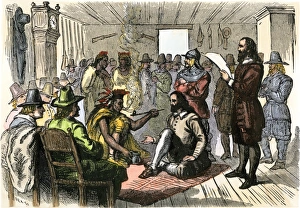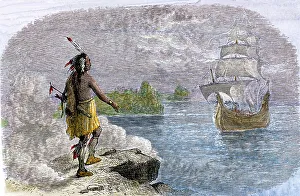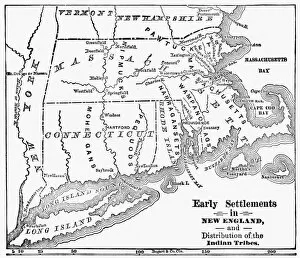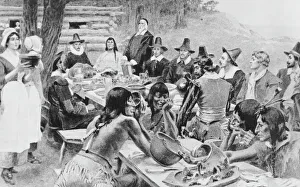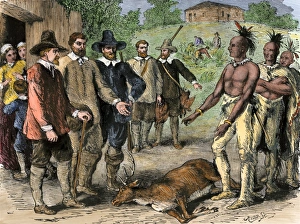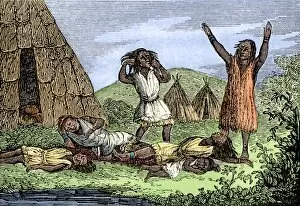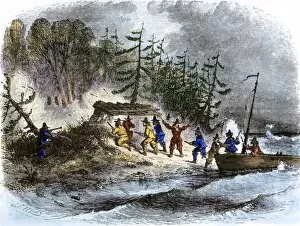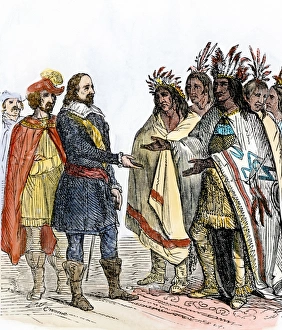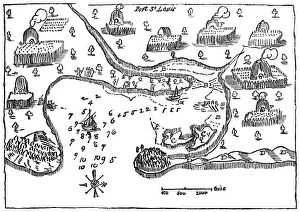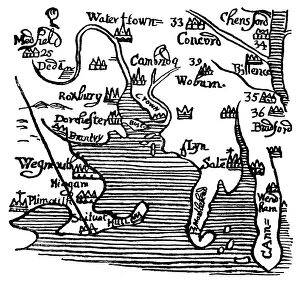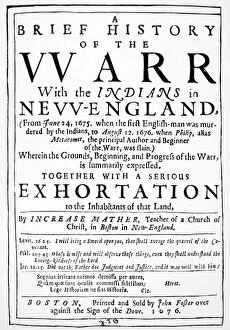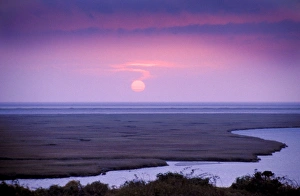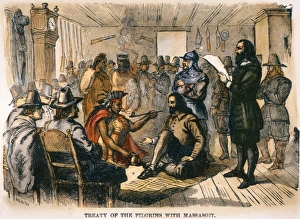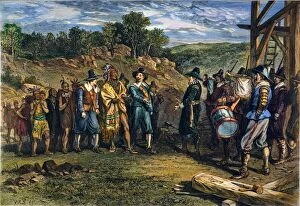Wampanoag Collection
"Wampanoag: The Indigenous Witness to the Arrival of the Mayflower" In 1620, as the Mayflower sailed into unfamiliar waters
All Professionally Made to Order for Quick Shipping
"Wampanoag: The Indigenous Witness to the Arrival of the Mayflower" In 1620, as the Mayflower sailed into unfamiliar waters, a Native American tribe known as the Wampanoag watched with curiosity and caution. Led by their chief Massasoit, they observed this foreign vessel approaching their shores in what is now New England. Massasoit's meeting with John Carver, the first governor of Plymouth colony, marked an important moment of interaction between two vastly different cultures. This encounter was captured in a steel engraving from the 19th century, showcasing the historical significance it held for both parties. The Wampanoag people had long inhabited these lands before European settlers arrived. Their presence can be traced back through time on maps depicting early settlements in New England. They were an integral part of this region's history and played a crucial role in shaping its future. One notable event that stands out is the First Thanksgiving, where Wampanoag tribespeople shared a meal with Plymouth colonists to celebrate a successful harvest. This act of goodwill and cooperation exemplified moments when cultural barriers were momentarily bridged. However, not all interactions were peaceful. King Philip (Metacomet), another prominent Wampanoag chief depicted in copper engravings by Paul Revere and others, led his people against English encroachment during King Philip's War (1675-1676). This conflict resulted in significant loss for both sides and forever changed relations between Native Americans and European settlers. Despite such conflicts, there were instances of friendship and mutual respect between individuals like Edward Winslow and Massasoit. Winslow visited Massasoit as a representative of Plymouth colony leader Governor William Bradford. These encounters showcased diplomacy amidst turbulent times. The resilience and contributions of the Wampanoag cannot be overlooked or forgotten either. They generously gifted meat to sustain Plymouth colonists during harsh winters, highlighting their willingness to assist and coexist.

